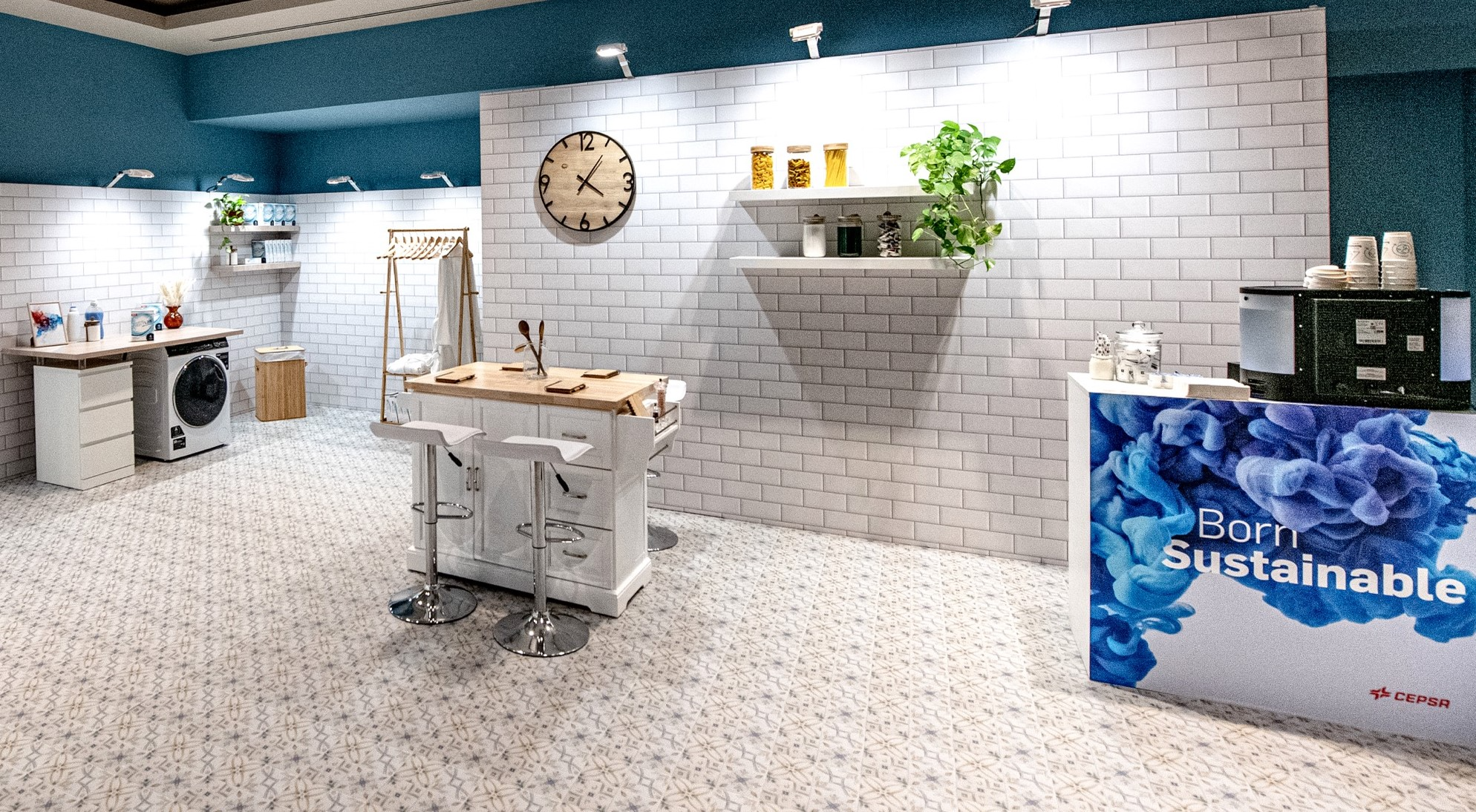The new NextLab’s carbon footprint, produced by Cepsa Química replacing partially traditional feedstocks with sustainable raw materials, is almost 80% lower compared to traditional LAB made with fossil raw materials. This was the result of a study carried out by independent consultant on the Life Cycle Assessment of NextLab-R compared to the same product derived from petroleum derivative. The company will present this study, verified by a three-expert panel, at the 12th edition of the CESIO World Surfactant Congress, which will take place from June 5th to 7th in Rome.
 Cepsa Química´s booth at Cesio. Image Credit: Cepsa Química
Cepsa Química´s booth at Cesio. Image Credit: Cepsa Química
Specifically, NextLab-R, which incorporates certified biomass cultivated guaranteeing the standards of sustainability (e.g. non-peatland, non-land use change over the last 20 years), achieves up to 80% reduction in greenhouse gas emissions compared to fossil counterpart, while maintaining the same characteristics and properties. Savings increase to 1,320 kg CO2/ MT LAB produced.
Higher greenhouse gas emissions reductions are expected when combining renewable raw materials use with other strategies, such as reduction of carbon emissions in the production process.
The NextLab-R produced by Cepsa Química is the world's first sustainable linear alkylbenzene (LAB) with the same technical physicochemical qualities and properties as the traditional kerosene-based LAB, but with lower CO2 emissions in a cradle-to-gate scenario, therefore, reducing its impact on the environment.
The reduction in the environmental footprint of the sustainable LAB produced by Cepsa Química influences the detergents made with this product. Hence, NextLab-R makes it possible to significantly improve the degree of sustainability of detergents without having to change their formulation and maintaining the same technical properties. This means that manufacturers of household detergents can reduce their GWP index by up to 25% by using Cepsa Química’s new sustainable LAB in their compositions.
NextLab Production
In general terms, the NextLab-R production process starts with obtaining linear paraffins of renewable origin.
The next step consists of transforming these n-paraffins into olefins and, after exposing them to a subsequent alkylation process with benzene, a sustainable linear alkylbenzene is produced. The final step is the sulfonation and neutralization of this sustainable LAB or NextLab-R to produce LAS, the most widely used biodegradable surfactant in detergents worldwide.
NextLab-R's manufacturing process is currently performed under a Mass Balance chain of custody methodology, and it is verified on a regular basis by an independent Body of a renowned Sustainability Certification System. This procedure guarantees sustainability in the production process from the origin of raw materials to the delivery of final products, using the mass balance.
More than 60% of the biodegradable detergents on the market, both for household and industrial use, use LAS as a surfactant in their formulations. Its excellent properties, its efficacy, as well as its processability and compatibility with other ingredients, make it a very useful element in the washing process, both in traditional (powder or bar detergent) as well as more sophisticated products (single-dose capsules or highly concentrated liquid detergents).